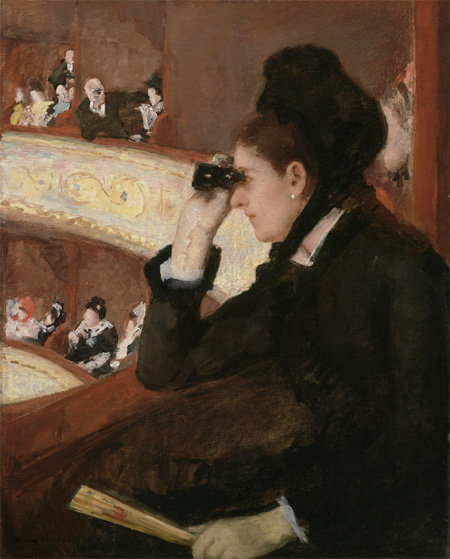Woman as a viewer
Woman as a viewer
Posted September. 24, 2020 07:40,
Updated September. 24, 2020 07:40

Impressionism, which opened the doors to modern art, flourished between 1874 and 1886, through eight rounds of exhibitions held in Paris. More than 50 artists had taken part in the Impressionist Exhibitions, including three female artists. One of them was the American artist Mary Cassett.
Cassett decided to pursue her career as an artist though her father opposed to the idea. She relocated to Paris at the age of 22 and was accepted by the Salon within two years, but did not gain much attention as a female artist. When she grew frustrated after all of the paintings that were exhibited at the Salon in 1877 were declined, she joined the Impressionist group at the Edgar Degas’ invitation.
This painting is one of the earlier paintings of the artist that depicts a woman attending a performance at the Comédie-Française, national theatre of France. The theatre and the opera house were one of the most popular destinations in Paris at that time, because it was not only a chance to view performances but encounter the nouveau riche. The national theatre was also an attractive destination for Impressionists who sought to depict lively urban life. Male artists also drew paintings of female spectators, depicted mostly as a pretty object in a frame. The female that Cassett depicted, however, is independent and proactive. The woman in black is peering through opera glasses, in the same way the man in the upper left of the painting. In the history of art, men had always been the viewer and women being seen. Cassett breaking away from the stereotype, depicts the woman as an actor and a viewer.
When the painting was first exhibited in the U.S. in 1878, it was favorably received as “exceeding powers of males” and was the only painting along with Degas’ that escaped criticism. Back then, women were not allowed to study art at universities. In spite of such discrimination, Cassett did not give up her career as an artist throughout her life. The French government awarded the Legion of Honour in 1904 in recognition of her service. Perhaps the woman in the picture had been the very reflection of the artist herself.







